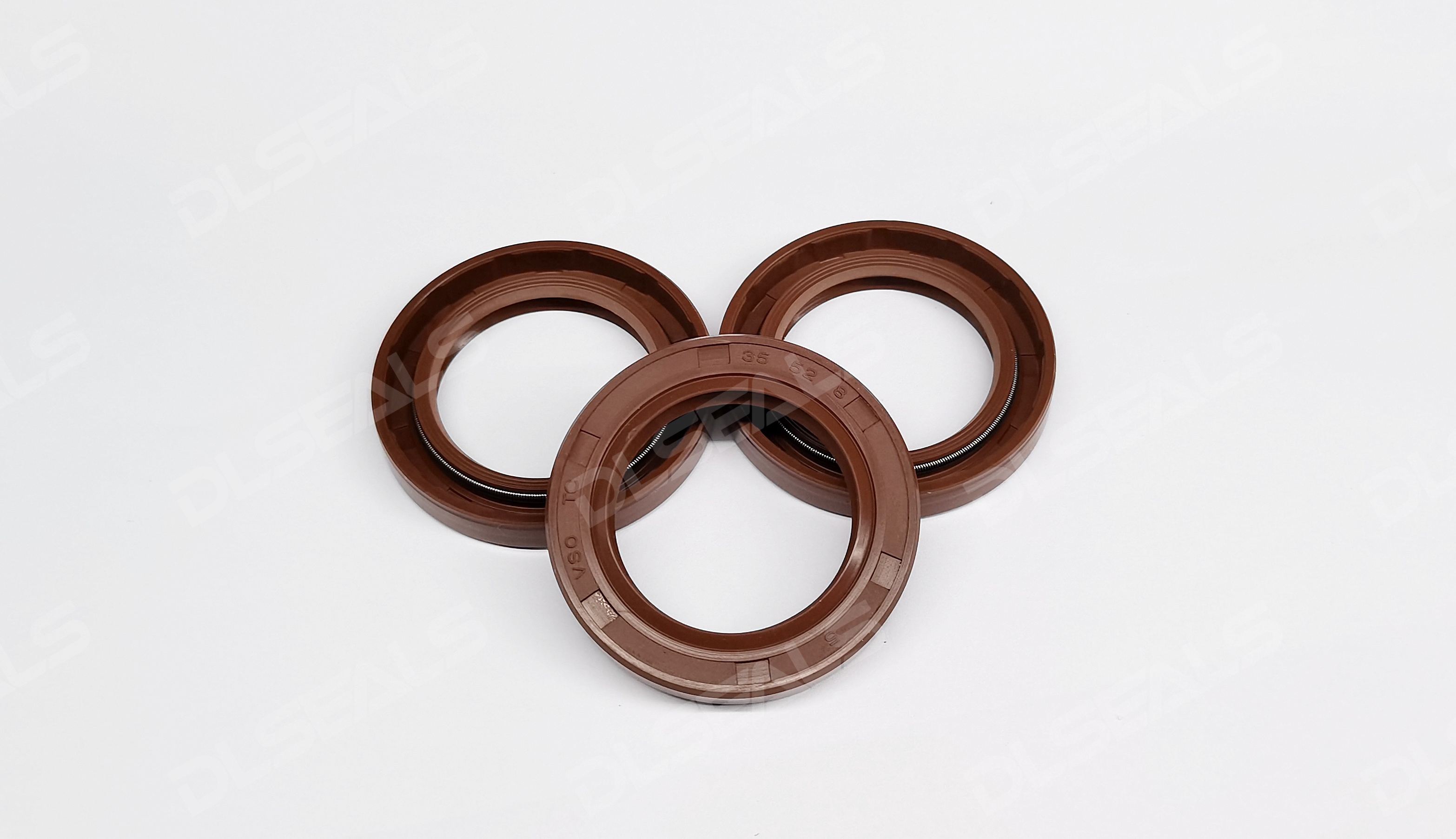News
A2024-12-26

Oil seals, also known as lip seals, are a type of sealing element widely used in various mechanical equipment. They are mainly used to prevent the leakage of lubricating oil or hydraulic oil and prevent foreign impurities from invading the interior of the equipment. The structure of the oil seal is exquisitely designed and can adapt to different working environments and pressure conditions. This article will introduce in detail the structural characteristics of the oil seal and how to select it reasonably according to application requirements.
1. Structural composition of oil seals
Oil seals are mainly composed of the following parts:
Rubber body: usually made of rubber materials with good oil resistance, heat resistance and wear resistance, such as nitrile rubber (NBR), fluororubber (FKM), etc. The rubber body has elasticity and sealing properties and is the core part of the oil seal.
Steel skeleton: located on the inner diameter or outer diameter of the oil seal, used to support the rubber body, enhance the rigidity and installation stability of the oil seal. The skeleton can be a metal ring, spring or other form of reinforcement.
Sealing lip: The key part of the oil seal, shaped like a lip, close to the surface of the rotating shaft or stationary part to form a sealing surface to prevent liquid leakage.
Dust lip: Some oil seals are designed with additional dust lips to prevent external dust and impurities from entering the interior of the equipment.
Lubrication groove: In some oil seal designs, a lubrication groove is set at the rear of the sealing lip so that the lubricating oil can be evenly distributed, reducing friction and extending the service life of the oil seal.
Skeleton oil seal
2. Working principle of oil seal
The working principle of oil seal mainly relies on the elastic deformation of the rubber body to make the sealing lip fit tightly on the surface of the rotating shaft or stationary part to form a thin sealing layer. When the equipment is running, the internal pressure will cause the sealing lip to fit more closely to the shaft surface, thereby improving the sealing effect. At the same time, the lubrication groove of the oil seal can maintain a certain oil film, reduce the friction between the sealing lip and the shaft, reduce wear, and extend the service life of the oil seal.
3. Application occasions of oil seals
Oil seals are widely used in various mechanical equipment, such as automobiles, motorcycles, construction machinery, machine tools, water pumps, fans, etc. The following are some typical applications:
Automotive industry: engine, gearbox, steering system, brake system, etc.
Engineering machinery: hydraulic systems and transmission systems of excavators, bulldozers, cranes, etc.
Machine tool industry: spindles, feed systems, etc. of various machine tools.
Water pumps and fans: prevent lubricating oil leakage and protect bearings.
4. Key points for oil seal selection
Choosing a suitable oil seal is essential to ensure the sealing performance and extend the service life of the equipment. When selecting, the following key factors need to be considered:
Working medium: According to the type of lubricating oil or hydraulic oil used in the equipment, choose a compatible oil seal material. For example, nitrile rubber is suitable for mineral oil, while fluororubber is suitable for high temperature and chemical corrosion resistant environments.
Working temperature: The temperature resistance of the oil seal material must match the working temperature of the equipment. Different rubber materials have different temperature resistance ranges, and oil seals of suitable materials need to be selected according to the actual use temperature.
Speed and pressure: High-speed rotating shafts may require oil seals with higher elasticity and wear resistance, while high-pressure environments may require reinforced oil seals or specially designed sealing lips.
Installation size: The inner diameter, outer diameter and thickness of the oil seal must match the installation position of the equipment to ensure correct installation and sealing effect.
Environmental conditions: If the equipment works in a harsh environment, such as dusty or chemically corrosive substances, an oil seal with dustproof and chemical corrosion resistance may be required.
5. Installation and maintenance of oil seals
Proper installation and maintenance are essential to the performance and life of oil seals.
Pre-installation inspection: Ensure that the surface of the shaft and the mounting seat is smooth, free of burrs and damage, clean the installation area, and remove oil and impurities.
Lubrication: Before installation, you can apply an appropriate amount of lubricating oil to the sealing lip and shaft surface of the oil seal to reduce friction during installation.
Prevent distortion: Avoid twisting or deformation of the oil seal during installation, and ensure that the sealing lip is correctly aligned with the rotating shaft.
Regular inspection: Regularly check the wear of the oil seal and replace damaged or aged oil seals in time to prevent leakage and further equipment damage.
Conclusion
As a key sealing component in mechanical equipment, the structure and performance of the oil seal directly affect the operating efficiency and reliability of the equipment. By understanding the structural characteristics and selection points of the oil seal, you can choose the right oil seal for different applications, thereby ensuring the sealing performance and long-term stable operation of the equipment.
[DLSEALS kindly Reminder] Sealing issues? Turn to DLSEALS! As a sealing component manufacturer, we specialize in customizing sealing components, providing a full range of services from design, research and development, production, testing, and more. If you have more information you'd like to know, feel free to contact us directly. DLSEALS's product experts are dedicated to serving you!